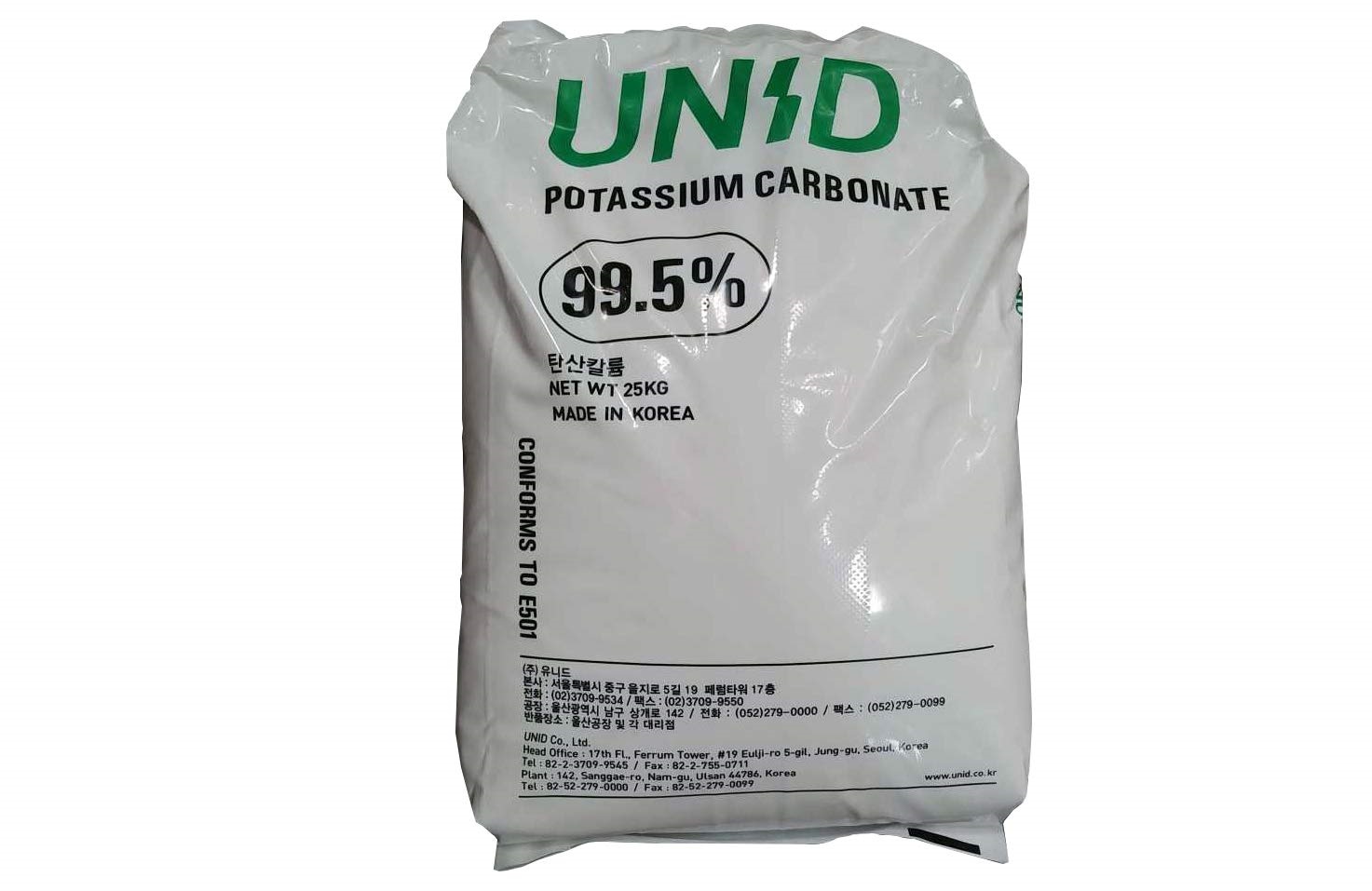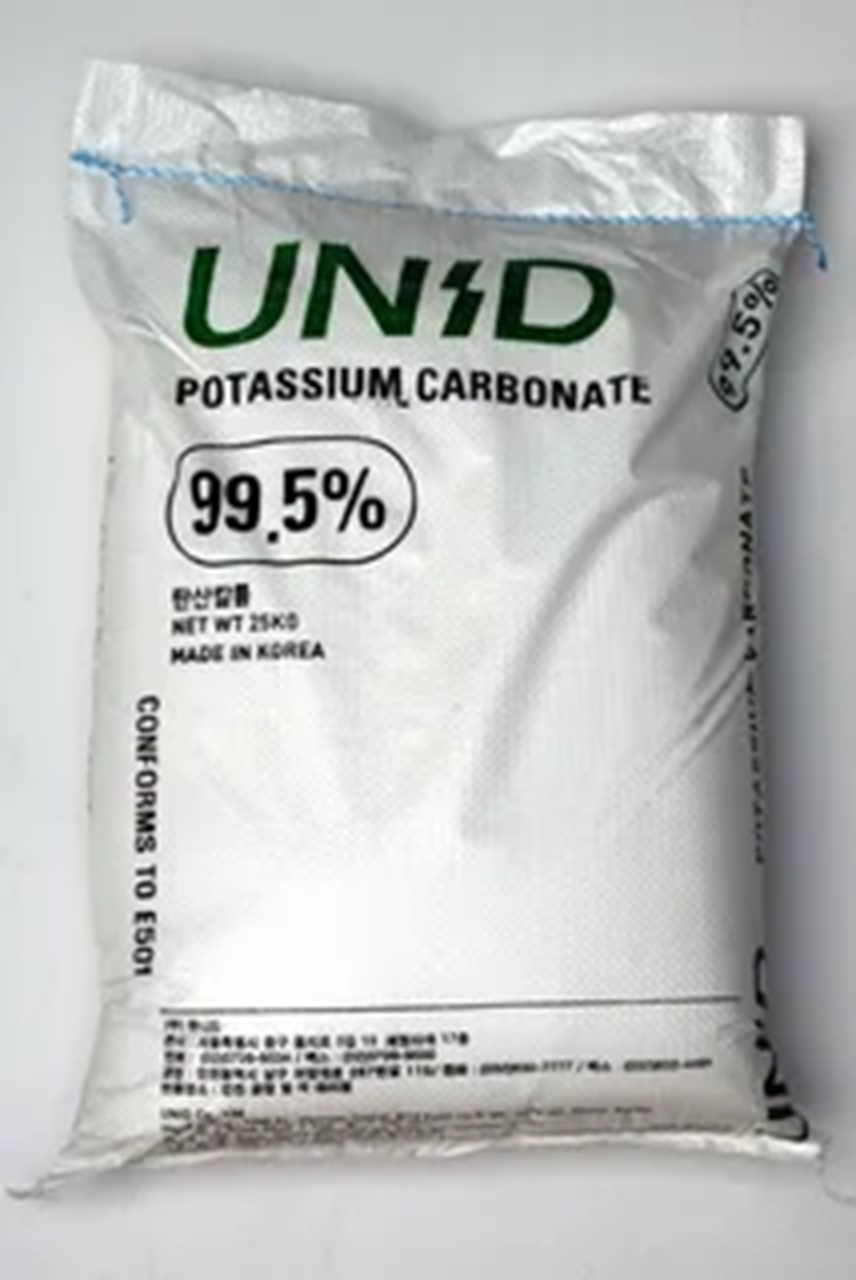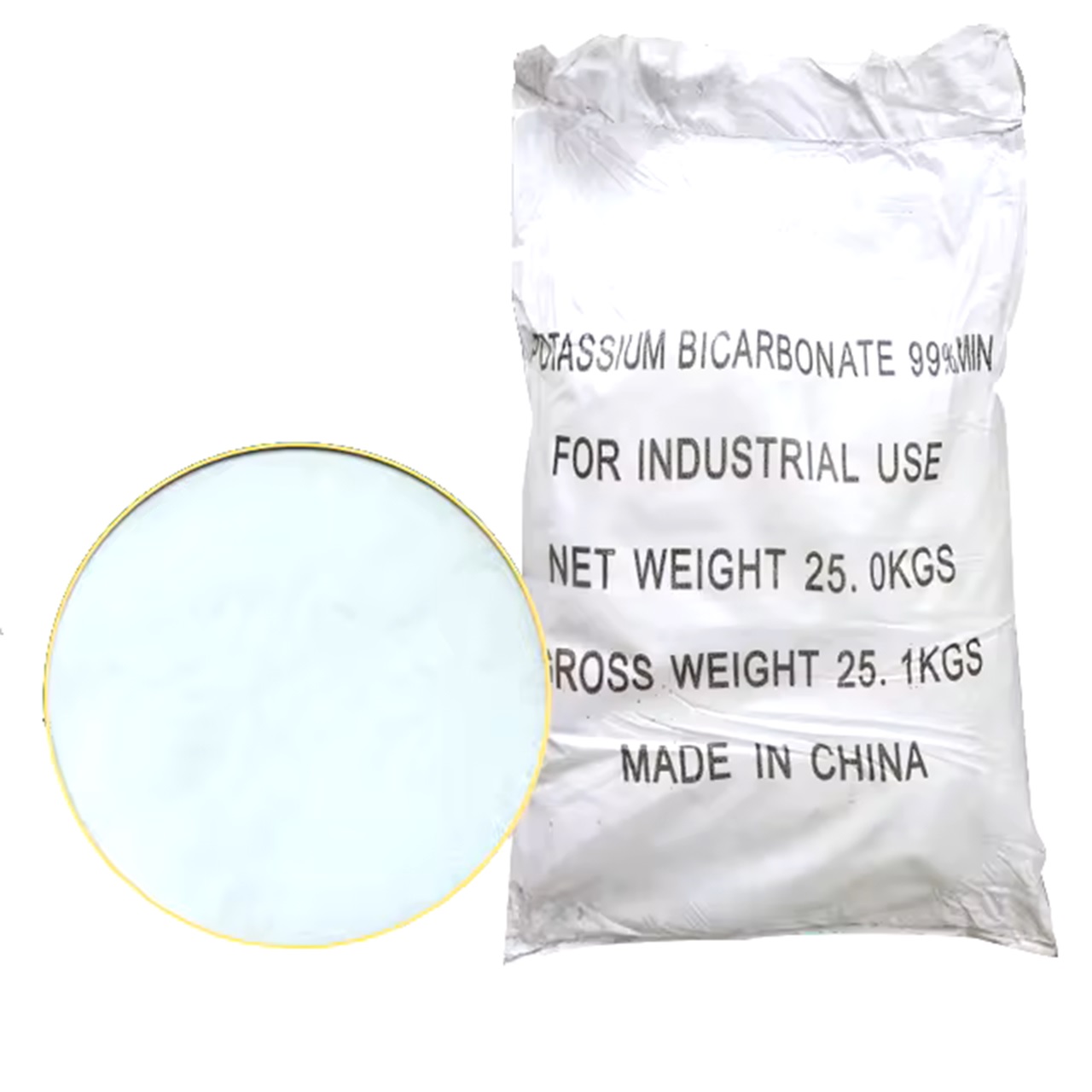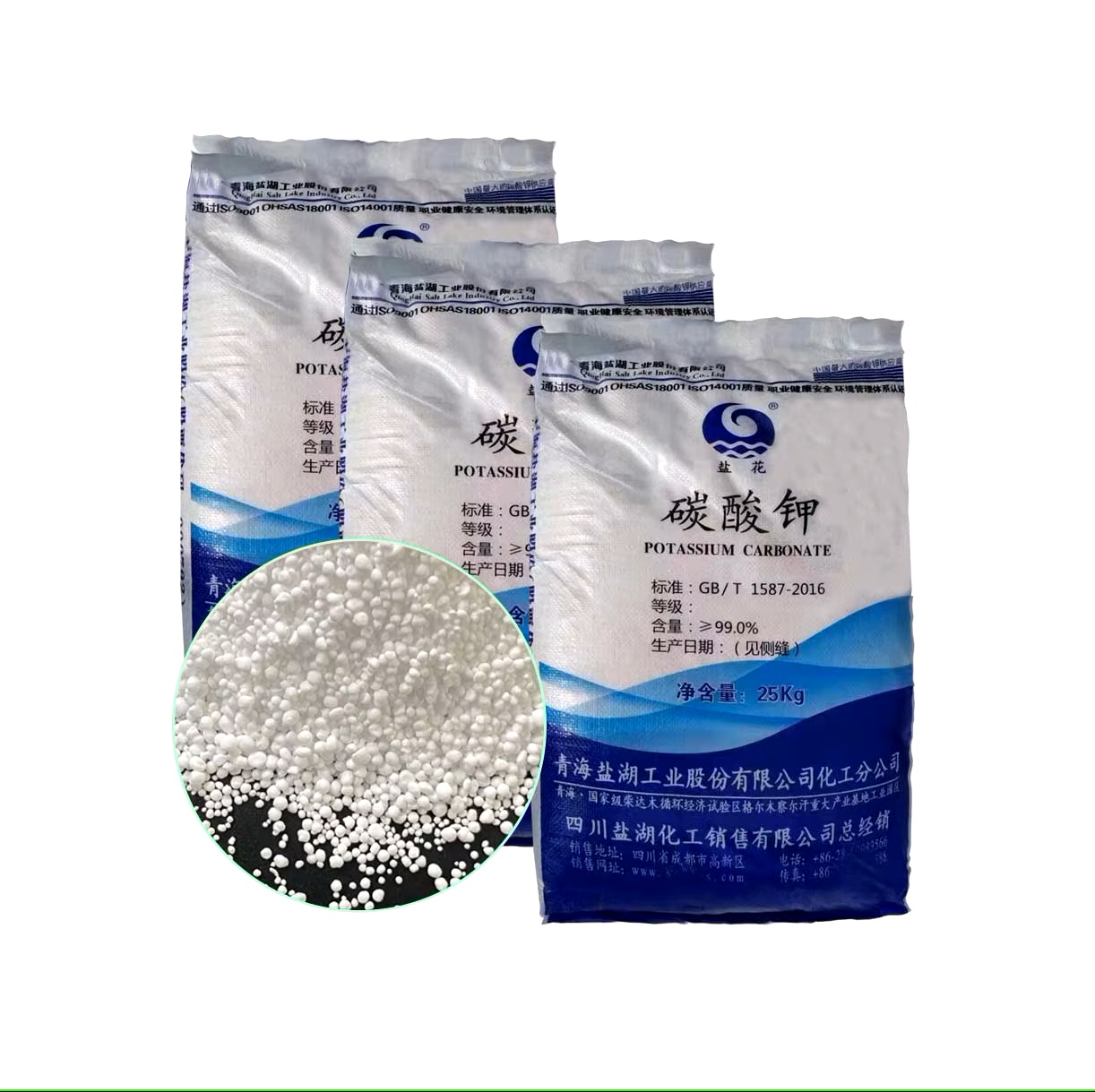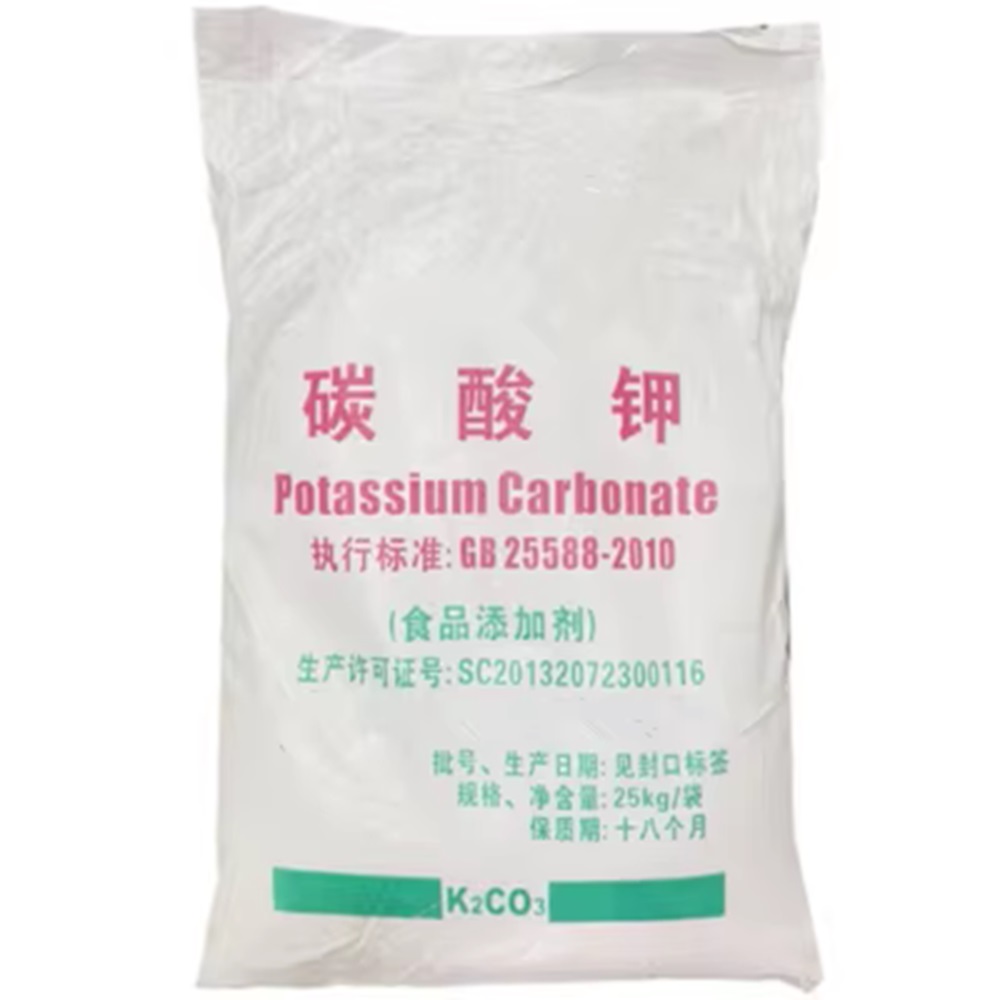We unleash your business potential by maximize the business innovation.
Send EmailE501, E501i, Potassium Carbonate, Carbonic Acid Potassium Salt, Potash, Salt of Tartar, 584-08-7
-
E Code: E501
-
CAS Number: 584-08-7
-
Other Names: Potash, Carbonic acid potassium salt, Salt of Tartar
-
Physical Properties:
-
State: Solid (usually in granules or powder)
-
Color: White
-
Odor: Odorless
-
Boiling Point: Decomposes before boiling
-
Melting Point: 891°C
-
Solubility: Highly soluble in water
-
-
Chemical Properties:
-
Molecular Formula: K₂CO₃
-
Molecular Weight: 138.21 g/mol
-
pH: Very alkaline (pH 11.6 in 1% solution)
-
Molecular Formula (Potassium Carbonate): K2CO3
Molecular Weight: 138.2 g/mol
Chemical Name: Potassium Carbonate
CAS Number: 584-08-7
It is the dipotassium salt of carbonic acid. It is also called pearl ash. It is an inorganic salt with alkaline properties.
Other Names:
Dipotassium Carbonate
Carbonate of Potash
Salt of Tartar
Pearl ash
Anhydrous K2CO3
Carbonic acid potassium salt
Physical and Chemical Properties:
It can be found in very different forms in terms of physical appearance. It can be found as crystal powder or granule. Similarly, it can be in the appearance of a very soft white powder.
Similarly, if we compare, it can be in hygroscopic crystal form.
It has alkaline properties. It is odorless.
Its melting point is 891 ° C.
It has a high solubility property in water. If we give a value as solubility, it is 111 g/100 g water. As can be understood from here, it dissolves more in water than in the solvent by weight. Although the reason is not fully understood, it does not dissolve in ethanol, which is a very good solvent.
Its density is 2.43 g/cm3.
It exhibits stable properties under normal conditions. It does not show compatible properties with strong acids and in areas where there is moisture.
Areas of Use of Potassium Carbonate:
In laboratory studies, a potassium source is needed in some cases. The compound you want to use as a potassium source in your reactions in the laboratory may be potassium carbonate. In such areas, it is used for drying or in acid-salt, base-salt reactions, or more precisely in buffering reactions.
Potassium Carbonate, which has excellent moisture absorption properties for drying harvested grapes and for opening the colors of grapes, is used. It is not only used as a drying accelerator in grapes, but also enables the dehydration of pears, apples, apricots and other fruits.
One of its most striking features is that it creates an alkaline environment. For this reason, it has excellent properties to neutralize the excessive acidity of cocoa beans in cocoa production.
Potassium carbonate is used to absorb CO in environments that release carbon monoxide in the presence of high pressure and high temperature. If a similar comparison is made, it performs less absorption than amine-based formulas.
Similarly, it is the most efficient carbon dioxide absorption chemical substance used to capture CO2 in pressurized fluidized bed combined cycle plants. If we make a comparison in this method, the carbon dioxide retention percentage is around 98%. In another method, carbon dioxide absorption is between 85% and 95% with the use of monoethanol amine.
In the medical field, some potassium-containing drug supplements are given to people with low potassium levels. It is used as a potassium source in the production of such appropriately interesting tablets.
It also has the ability to soften water.
Silica is used in glass production. Sodium Carbonate or Potassium Carbonate is used to reduce the melting temperature of glass. In this way, it provides lower energy consumption.
It is used to reduce the corrosion tensile strength as a complementary chemical of salt water.
In the production of Sodium Bichromate, chromium ore is provided and used as a chromium source. Some factories use Potassium Hydroxide.
If another comparison is to be made, it is used in flue gas treatment systems.
Sodium carbonate is used in glass manufacturing. However, television glasses contain lead, barium and strontium oxide salts. These compounds are not very compatible with sodium carbonate. However, potassium carbonate is better compatible with these compounds. Therefore, if a comparison is to be made, it is a more suitable chemical for television glasses. And the vast majority of the use of this chemical is in the production of television glass.
It can be used as a micronutrient source in fertilizer manufacturing.
Corrosion inhibitors contain potassium carbonate depending on the area of use.
It is used as a potassium source in sugar beet and barley production. In this way, it ensures the formation of large leaves that will allow sugar beet and barley to receive more sunlight.
